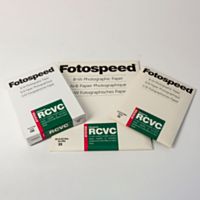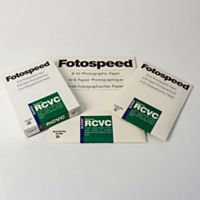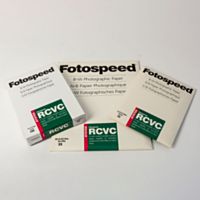What is ‘Photographic Expressionism’ and Why is Fotospeed’s Cotton Etching 305 the Perfect Paper to Print It On? By Doug Chinnery


Doug Chinnery is a Fotospeed ambassador and photographer. When describing his work, Doug leans towards the term ‘photographic expressionism.’ In this latest blog, he explains what this means, and how it is reflected through Fotospeed paper.

Intentional Camera Movement
For some time now, I, and the growing number of photographers who enjoy making images using techniques such as Intentional Camera Movement and multiple exposures, have struggled to describe the style of our work. There hasn’t been a term which adequately expresses what it is we do.
It’s all very well to use the camera technique terms, but that feels rather clinical for such an expressive way of making art. It also doesn’t account for the fact that we often employ several techniques, both in camera and in how we process the images back in the digital darkroom.
So why do we need a definition at all? In truth, most of us making this kind of work really don’t for our own sake, but many have found it increasingly frustrating when entering competitions or endeavouring to have their work exhibited in galleries, that these entities do not know how to categorise what it is we are doing. For this reason, it is often rejected.

Our work seems to be in a new space which is neither distinctly ‘photography’ and yet not quite ‘art’. It appears that, until they understand our process and where our work sits, this will continue to hold back many of those who make work in this area. Our hope is that by having an accepted definition, it might help these bodies to understand us better and open their shows and competitions to accept our work more readily.
A poor relation of the art world
The paucity of significant museum exhibitions devoted to abstract photography testifies to this situation. MOMA in New York held a flurry of three such exhibitions between 1948 and 1960 (In and Out of Focus 1948, Abstraction in Photography 1951 and The Sense of Abstraction 1960). The next internationally important exhibition was ‘Shape of Light’ at Tate Modern, London in 2018 – a gap of almost sixty years. This seems to bolster the view that abstract photography is the poor relation of the art world.
This struggle to find a definition for more expressive photography is not new. Right back in 1905, Alfred Steiglitz was opening his “Little Galleries of the Photo-Secession” in New York to promote Pictorialist photography, with an aim to have it gain wider acceptance as art. A similar group called ‘The Linked Ring’ was doing the same in Europe at the same time. In the early 1950s, German photographer and critic, Otto Steinert, coined the phrase ‘Subjective Photography’. However, none of these terms are able to capture the essence of what we are trying to convey.
Valda Bailey and I have talked about this issue, trying to find a term which best describes what it is we do, whilst giving enough breadth to allow for the diversity of exciting work we are seeing being made in this field of art. We are keenly aware of the influences of Modern Art movements, including the Abstract Expressionists, Cubists, the Bauhaus and others in what we do.

After long deliberation, and with huge respect for the giants on whose shoulders we stand, we have defined ourselves as ‘Photographic Expressionists’, a term coined by Rick Doble in 1999.
The Paper of choice
For me, the perfect paper for printing expressionistic images is one from the Fotospeed Signature range – namely, Cotton Etching 305.

I was privileged to have a small part in the design of the characteristics of the paper (a dream for any photographer or artist).
For a paper to have my signature on the box, I had a very clear idea of the characteristics I wanted it to display. Firstly, a heavy weight, deeply etched, matt texture to make the most of fine detail and to bring out the subtleties of colour and contrast in images. I also wanted the paper to be a neutral white – neither too warm or too cool, so that it could be relied upon colours rendered true. I have found this means I have to do little or no colour correction when working with Cotton Etching (and I print virtually all my work on this paper). Finally, I was very keen that this matt paper should render blacks deeply and richly – which it does. I know of no textured matt paper which does this better.
For me, it is the perfect paper for ‘Photographic Expressionistic’ images – and many other styles too. I do hope you will try it.
Take a look at more of Doug’s work on his website.
Visit Fotospeed’s YouTube channel for more tricks and tips, or read some of our other blogs here.









